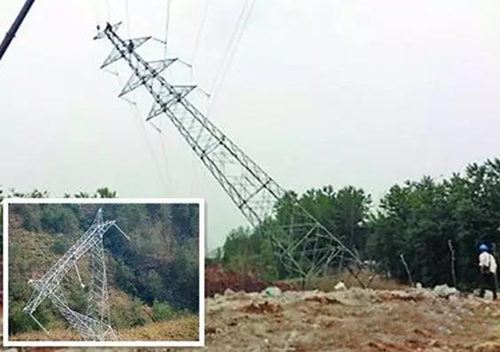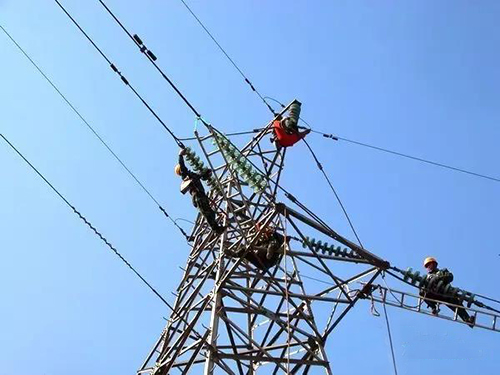Transmission line tower tilt monitoring system is currently widely used in smart grids. The power tower is mainly used to erect high-voltage wires and lines. It is an important infrastructure for overhead transmission lines and an electric bridge. It plays a role in supporting wires, insulators and related power facilities, and can keep them adequate for the earth and other buildings. safe distance. Therefore, the operation of the tower will directly affect the safe operation of the transmission line, which is related to the safety and benefits of the entire power grid system.
Due to the complex geological and meteorological environment of the overhead transmission line corridor, some poles and towers are located in mined-out areas, slopes, and easy-to-wash areas, often due to factors such as directional wind, sand dug construction around the poles and towers, excessive icing of wires, geological disasters, and man-made theft. The impact caused a series of major power incidents such as the tilt of the tower, the inverted pole, and the disconnection.

Traditional power tower maintenance mainly relies on regular inspections and human observations, which are very necessary safety protection methods. However, these methods have certain subjectivity, some parameters are difficult to measure manually, and it is not easy to find problems in time, and cannot meet the requirements of real-time monitoring of the tower. In order to eliminate the potential safety hazards of the tower and avoid events that endanger communication safety such as tilting and collapse, it is necessary to adopt advanced tilt monitoring system technology and equipment to conduct real-time safety monitoring of the power tower.
The power transmission line tower tilt monitoring system is suitable for the monitoring of the 10kV-1000kV high voltage power transmission tower tilt due to geology, mudslides, and landslides.
Mainly composed of background monitoring and analysis center, inclination sensor, microprocessor, wireless communication unit, power supply and other modules. Through the inclination sensor, the rod offset and longitudinal tilt are monitored online in real time, and monitored through GPRS/WIFI/OPGW optical fiber network. The received data information is transmitted to the back-end monitoring and analysis center in real time to calculate the inclination angle of the tower, and display it in charts, graphs, tables, etc. for the line visors to view, providing a basic reference for the centralized repair and remediation of the power tower.
In the actual application of the tilt monitoring system, by establishing and verifying various theoretical calculation models among environmental information such as the inclination angle of the transmission line conductor, the inclination angle of the insulator tower, the ambient temperature, humidity, and the wind direction, the inclination of the tower is given to improve the system and the accuracy of the calculation.

Generally speaking, after the inclination sensor obtains the inclination data of the tower in the two directions along the line and the horizontal line, it needs to use the GSM/GPRS module communication network to transmit the data in real time. After being transmitted to the monitoring center platform, combined with the expert knowledge base and various theoretical models, the inclination of the tower is given, and the emergency repair information is given in time.
The construction of a smart grid is a huge project. It is a complete, strong and reliable chain. Using advanced communication, information and control technology, it is to build a unified and strong intelligence characterized by informatization, automation, digitization, and interaction. Power grid. The tower inclination monitoring system helps the operation and maintenance personnel to understand the operating status of the line tower in a timely manner, provides a factual basis for accident prevention and subsequent analysis, and escorts the safe operation of the power grid.

 +86 189 2129 2620
+86 189 2129 2620
+86 176 0611 8008 sales@bwsensing.com
sales@bwsensing.com














